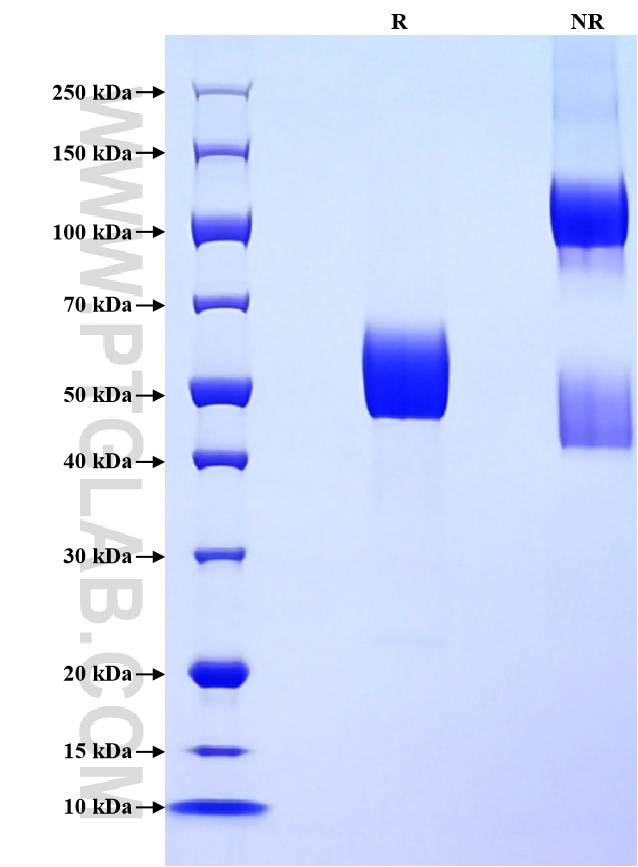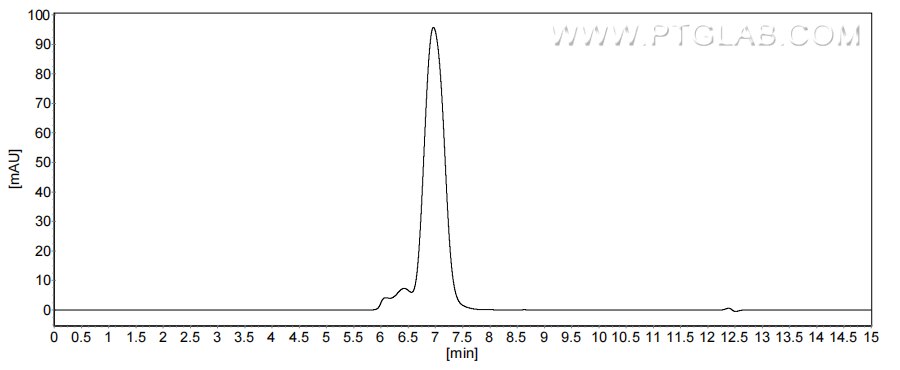Recombinant Human TGFBR2 protein (rFc Tag)(HPLC verified)
Species
Human
Purity
>90 %, SDS-PAGE
>90 %, SEC-HPLC
Tag
rFc Tag
Activity
not tested
Cat no : Eg2943
Validation Data Gallery
Product Information
| Purity | >90 %, SDS-PAGE >90 %, SEC-HPLC |
| Endotoxin | <0.1 EU/μg protein, LAL method |
| Activity |
Not tested |
| Expression | HEK293-derived Human TGFBR2 protein Thr23-Asp159 (Accession# P37173-1) with a rabbit IgG Fc tag at the C-terminus. |
| GeneID | 7048 |
| Accession | P37173-1 |
| PredictedSize | 41.5 kDa |
| SDS-PAGE | 48-65 kDa, reducing (R) conditions |
| Formulation | Lyophilized from 0.22 μm filtered solution in PBS, pH 7.4. Normally 5% trehalose and 5% mannitol are added as protectants before lyophilization. |
| Reconstitution | Briefly centrifuge the tube before opening. Reconstitute at 0.1-0.5 mg/mL in sterile water. |
| Storage Conditions |
It is recommended that the protein be aliquoted for optimal storage. Avoid repeated freeze-thaw cycles.
|
| Shipping | The product is shipped at ambient temperature. Upon receipt, store it immediately at the recommended temperature. |
Background
TGFBR2 is a serine/threonine kinase and the primary ligand-binding receptor. After binding of the ligand TGF-ß1, TGFBR2 forms a heterodimer complex with TGFBR1, causing conformational changes and signal propagation via canonical (SMAD-dependent) and non-canonical (SMAD-independent) routes. Upon translocation into the nucleus, activated SMAD complexes can interact with various transcription factors to control target gene expression.
References:
1. Batlle E., et al. Immunity. 2019;50:924–940. 2. Derynck R., et al. Nature. 2003;425:577–584.


